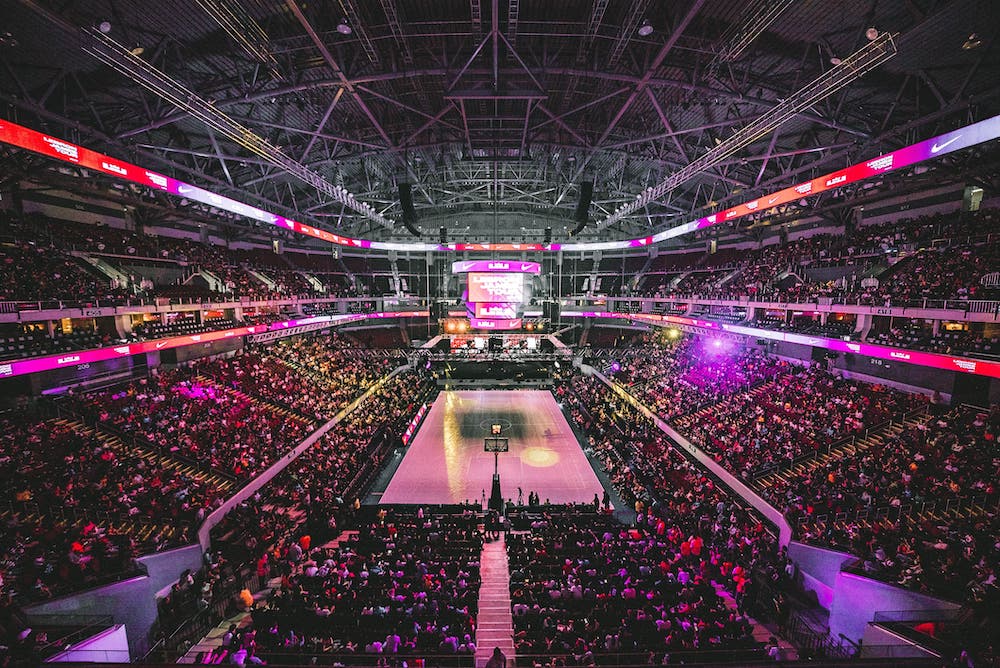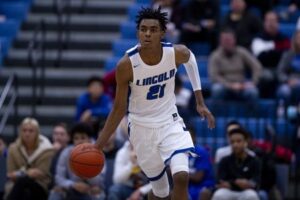Slavery in almost every situation is about commerce. According to the trans-Atlantic Slave Trade Database, 2.5 million slaves were shipped to the U.S. That’s probably a conservative number. Sports can harbor some of the same ideologies. In FIBA and FIFA, players can be sold to other teams. European kids are signed at a young age to long term contracts that can read like music’s 360 deals. The NFL still does not have fully guaranteed contracts in the most physical sport I’ve ever seen. Ironically, the NBA has done a better job of supplying what players need and being fair in revenue splits. The NCAA has maintained its control over revenue and players. But are these institutions enslaving or are the athletes and their families enslaving themselves?
Studies show that people from different regions have physical gifts and talents. College coaches recruit from the east coast for guard play. The midwest is known for tough physical players, especially forwards. While the West coast is notorious for long guards.
A very unique and disturbing area of the country is the southeastern portion of the US. Per capita, these athletes are the best in the country, as they are known as the strongest and most athletic in the country (outside of Africa). Most of this can be contributed to the slave trade that originated in the Virginia, Carolinas, Georgia, Alabama, Mississippi, Florida etc. The intentional breeding of slaves produced taller, bigger, stronger athletes. Because of this, basketball players from this area tend to be the most sought after in the country. This region is also one of the poorest, most racist and uneducated; but somehow maintains the title of the Bible Belt all at the same time. Go figure.
” Young players and parents can sometimes forget that choosing a program is a deal. ”
To understand why this is important, one would have to understand the landscape of college sports. The Power Five Conferences generate the most revenue and drive the NCAA sports scene. Ironically, three of the Power 5 conferences are in the south. The Big Blue schools, Kentucky, Duke, Kansas and UNC are the staples of college basketball and are also located in the south with the exception of Kansas.
POWER FIVE CONFERENCES
- Boston College
- Clemson
- Duke
- Georgia Tech
- Florida State
- North Carolina State
- Syracuse
- Louisville
- Miami
- North Carolina
- Notre Dame
- Pittsburgh
- Virginia
- Virginia Tech
- Wake Forest
- Maryland
- Penn State
- Iowa
- Rutgers
- Michigan State
- Illinois
- Wisconsin
- Ohio State
- Michigan
- Purdue
- Indiana
- Minnesota
- Nebraska
- Northwestern
- Baylor
- Iowa State
- Kansas
- Kansas State
- Oklahoma
- TCU
- Texas
- Texas Tech
- West Virginia
- Oklahoma State
- Arizona
- Arizona State
- UCLA
- Cal Berkeley
- Colorado
- Oregon
- Oregon State
- Washington
- Washington State
- Utah
- Stanford
- USC
- Alabama
- Kentucky
- Clemson
- Vanderbilt
- Tennessee
- Mississippi
- Mississippi State
- Florida
- Florida State
- Georgia
- Missouri
- South Carolina
- LSU
- Arkansas
- Auburn
- Texas A&M
Athletic programs can generate 350 million dollars. Head coaches make millions. Assistant coaches make hundreds of thousands of dollars. Where is the rest of the revenue going? Certainly, not to the players. The schools give a stipend/scholarship check to the athletes. Typically, the check doesn’t amount to anything more than paying a few months rent and a few pair of shoes.
Why do players take money? The fact remains that almost every college in the country operates at a supposed loss. Funds are applied to campus buildings, academic departments, college administrators, professors etc, which are all needed. The players however struggle to pay their rent in off campus housing and can’t feed themselves outside of fast food dollar menus. While at San Diego State, twice I was evicted from my apartment and left to figure it out on my own.
Slavery did not originate in the US, but was perfected in the US. Even after the abolishment of slavery, remnants reverberate through corporate offices to the prison system. College revenue sports sits at the every top of that list. The workforce is told that they need the job, even if the wage is minimal.
Some will say, “My child will get his/her education paid for.” Signing with a college is a deal that should work for the school and the player. More often than not, it only works for the school. The big blue schools Duke, Kansas, North Carolina and Kentucky typically get the best high school basketball recruits in the country because of their reputation and production. To Duke’s credit, academically the university is in the top 10 in the country according to usnews.com. North Carolina is in the top 30. I wonder why top 25 recruits are not choosing Princeton, Yale, Columbia, MIT and Harvard especially if you have aspirations to play at the highest level? One would have to know that going to a top university can only boaster your chances of playing professionally. If even that wasn’t the case, life after basketball is much easier out of Stanford than a state school. If a family truly wants their child to get the most out of their college experience attending an institution that could change life and influence generational wealth should be the first option. The truth of the matter is that every university can not and/or will not.
The RUN is designed to give people information based on experience. I review the list of colleges in which players are considering. Often times I’m dumb founded. Not only is it a bad fit from a basketball perspective, the education the players recieve is useless. I guess in the big scheme of things, getting an education is a great thing. But, getting an education that will help you become successful and wealthy is altogether different. Prior to San Diego State University, I attended Fresno State my freshman year. As an 18 year old of African descent, I found myself with three teammates sitting in a Chicano Latino studies class and no clue as to why we were there. I wish I was making this stuff up. I have nothing against The Chicano Latino Studies program, but the value that we added to Fresno State is worth more than what those classes offered us.
Unhappy with the basketball portion of college, I intended on transferring to Pepperdine University in the Malibu area of Los Angeles. When the Pepperdine coaches looked at my transcript, I had more electives than core courses. A clear indication that Fresno State put me in a course load that would just keep eligible to play. This changed my path by having to enroll at Los Angeles City College where I was fortunate enough to have a coach that understood the academic requirements to get back to the Division I level, put together a plan and pulled every string to get me back to that level.
Gentrification is happening everywhere. College is no exception. Who’s to blame? Is it the lead recruiting coach who is more often than not African American? Is it the head coach? Is it the University? Maybe it’s the NCAA. No, it’s the parent(s) and the player that are at fault. If a player decides to go to a school of higher education, that school had better offer what that player needs to further them in life, in an industry other than coaching/teaching. Players should be obtaining professional degrees that include law, science, economics, business, finance etc. Bringing these skills back to your community and helping the next generation is essential.





